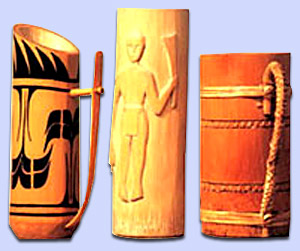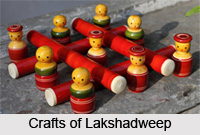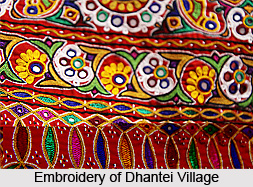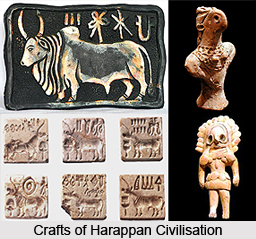 The history of Indian handicrafts is an old saga. There are a myriad of craft traditions in India. The crafts which flourished in India are basically subject to the social, economic and regional factors. The present status of craft in India owes much to the rich craft traditions of the past. Most of the crafts from the past continue to boom due to their utilitarian nature, their availability to the common people and popularity in domestic and foreign markets. The special needs of the patrons and royalty with vivid eye on foreign and domestic trade became the focal point of crafts of Indian subcontinent. Till date it is continuing to boom owing to the assimilating nature of Indian culture. Highly accommodative nature of the craftsmen to accept and use new ideas is also responsible for the growth of Indian crafts.
The history of Indian handicrafts is an old saga. There are a myriad of craft traditions in India. The crafts which flourished in India are basically subject to the social, economic and regional factors. The present status of craft in India owes much to the rich craft traditions of the past. Most of the crafts from the past continue to boom due to their utilitarian nature, their availability to the common people and popularity in domestic and foreign markets. The special needs of the patrons and royalty with vivid eye on foreign and domestic trade became the focal point of crafts of Indian subcontinent. Till date it is continuing to boom owing to the assimilating nature of Indian culture. Highly accommodative nature of the craftsmen to accept and use new ideas is also responsible for the growth of Indian crafts.
Ancient history of Indian crafts
The primal references of Indian crafts were found in the remnants of Indus Valley Civilization (3000 B.C.-1700 B.C.). The Indus valley civilization had a rich craft tradition. It has also got a technical brilliance in the arena of pottery- making, jewelry, threading, various sculptures like metal, stone, terracotta etc. A lot of material information from excavations at Harappa, Mohen-jo-daro etc. corroborates the craft tradition of the Indus valley civilization. The craftsmen supplied basic needs of the locales and also excess items were exported to ancient Arabian countries mainly through voyages.
The rich heritage of Indus Valley Civilization was perfectly incorporated in the Vedic era, starting from 1500 B.C. There is no dearth of references in the Vedic literature where instances of artisans involved in pottery making, weaving, wood crafting etc, are being duly mentioned. Especially the Rig Veda refers to a variety of pottery made from clay, wood and metal. It also mentions about lot many weavers and weaving of the then period.
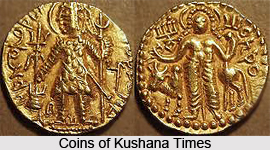
Medieval history of Indian crafts
Artistic production of crafts, too, proliferated during Mauryan Empire, a landmark in Indian history, starting from 3rd century B.C. It is believed that during the time of Ashoka, 84,000 stupas were constructed in India. The "Sanchi stupa" is a part of it and has gained worldly fame for its beautiful stone carving and relief work. Wearing fashionable jewelries was in vogue. Several sculptures were found in Bharhut, Mathura, Amravati, Vaishali, and Sanchi regions depicting female figures decked up in beautiful jewelries bear a proof of this. The iron pillars of Vaishali and Delhi, created during the time of Emperor Ashoka, are a spectacle of metallurgical works.
Indian crafts in Buddhist period
The foreign invaders, leaving aside their tradition of cultural and traditional glories, ennoble the history of crafts of India. The time period was during 1st century B.C and 1st century A.D .The impact of these intrusions can be noticed in the Buddhist sculptures from Taxila, Begram, Bamiyan, Swat valley, etc. A high degree of Greek influence is immensely found, especially in the statue of Buddha, having curly hair and wearing draperies. The same trend is maintained in the sculptures of the Kushana king Kanishka. These originated in the same period, depicting the influence of the central Asian Culture on Indian craftsmanship. Other exquisite craft pieces, namely, jewellery, textile making, leather products, metal working etc. inherited these influences and also absorbed them in accord to the Indian scenario.
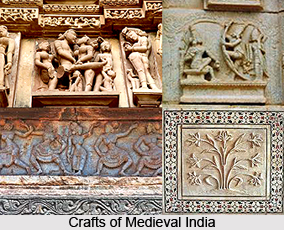
Indian crafts in Gupta period
The golden age of Guptas (AD 320-647) is not only esteemed the classical period in Indian history and that too of history of Indian crafts. The rock cut temples of Ellora and the Ajanta murals are perfect examples of it. These wall paintings throw us a realistic view of the lifestyle of that time. Another interesting feature is that it underwent evolution under the patronage of Gupta kings, excelling in jewelry making, woodcarving, sculpture, stone carving, and weaving.
Indian crafts in Mughal period
The craftsmen under the Delhi Sultanate period prospered in the fields of pottery, weaving, wood carving, metal working, jewelry etc. Mughal era was the golden period in the history of craft. The Mughals brought with them a rich heritage, which they had adopted from Persian territories. They imparted new techniques like inlay work, glass engraving, carpet weaving, brocades, enameling etc. The Mughal miniature paintings also disposed influence of the traditions of many Indian schools of paintings like Rajasthani, the Kangra, Pahari etc. The famous Peacock Throne of the Mughals is one of the premium examples of precious stone decorative work and metal craft. They also laid the foundation for a host of many craft traditions and also the famous Mughal miniature painting. Petra dura or inlay work is a unique example, perfectly beautified with jewellery.
History of crafts in South India
The Medieval period of Indian history is significant in the context of development of crafts. It expanded its aura to Southern region after capturing the market of the whole of northern territories of India. The contribution of the Cholas and the Vijaynagar Empire in the field of bronze sculpture, silk weaving, jewellery, temple carving still remains invincible. The fine example of stone carving from central India can be seen in the form of the Khajuraho Temples, built by the Chandelas. Rich and ornate wood and stone carving can be found in medieval temple of Jagannath at Puri in Odisha.
Modern history of Indian crafts
In present day scenario, growth and development of crafts in India is no less significant. Each and every Indian state has its own unique culture, their own designs, colors, materials in use and individual shapes and patterns, which is demonstrated in the Sholapith from West Bengal, handicrafts of that particular region. For instance, Kashmir is known for its Pashmina wool shawls as well as carpets, silverware, ivory works etc. North-Eastern and Eastern states like Assam and West Bengal are far-famed for their exquisite `Sholapith` and `Shital Patti` works. Others regions are acclaimed for crafts pieces, namely, Karnataka for its rosewood carving, sandalwood crafts etc. The engraved and enameled meenakari brassware found in Rajasthan, silk materials from Varanasi and Kanchipuram, colorful embroidery, mirror work, quilting and fabric painting from Gujarat etc. are some of the exclusive crafts popularized not only in India and also abroad. Stone crafts are in thing and few regions are popular for crystals and semi precious stones. The contemporary crafts vary from products like bed sheets, table mats, napkins, household furnishings etc. These instances of art made out of different textile and the usage of masterly printing range from tie and dye, block printing, hand printing etc. are in great demand now a days.
Crafts in Modern India
There is a huge domestic market for a hoard of utilitarian craft items such as bedcovers, sheets, cushions, curtains, tablemats, bags, metal furniture, mats, boxes, cabinets, wood furniture, toys, utensils, garden pots, terracotta items, brass and silverware, leather products, papier-mâché products, cane, jute and coir items, carpets, rugs, durries etc. The craft items are fabricated with a touch of modernity keeping in mind the demand of the present trend. Most of the units producing utilitarian craft items have attained the status of small-scale industry.
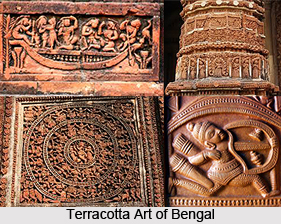
The market of art and craft ensures the demand for decorative items such as traditional wall hangings, silver cutlery, brass pots, embellished wooden sculptures, marble and wood inlay work, silk carpets, wrought iron furniture and decorative pieces, traditional paintings, enameled furniture, stone and wood carvings, metal, wood and stone sculptures etc. are also on the rise in India and abroad as well.
Carpet weaving industry is the largest export oriented craft industry from India. There is a great demand for costly silk carpets from Kashmir, which has become the status symbol in traditional Indian homes. Moreover, the exclusive woolen and non-woolen carpets also appeal the modern customers and the admirers of art. A variety of floorings and traditional durries are flooding the markets these days and decorating the floors of Indian homes.
Having maintained a rich cultural and traditional inheritance, the crafts testify the integral part in the life of an Indian, despite the rapid social and technological changes that are taking place. There is a timeless quality in these craft objects, for they have evolved over centuries and continue to be made even today with the same sentiment. The craft, commenced in the primeval age has been praised and appreciated by the regale of kings and even the contemporary people.



